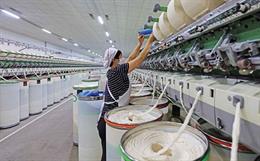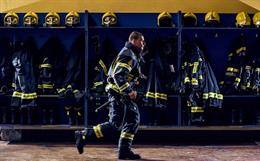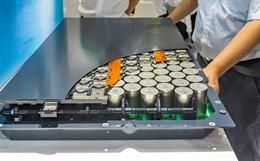Technicaltextiles have been slowly but steadily gaining ground due to one or more of thereasons such as functional requirement, health and safety, cost effectiveness,durability, high strength, light weight, versatility, customisation, userfriendliness, eco-friendliness, logistical convenience, etc. Unlike conventionaltextiles used traditionally for clothing or furnishing, technical textiles areused basically on account of their specific physical and functional propertiesand mostly by other user industries. Depending on the product characteristics,functional requirements and end-use applications the highly diversified rangeof technical textile products have been grouped into 12 sectorsapplication-wise.
Technicaltextile is an emerging area for investment in India. At present, India'scontribution in the global technical textile industry is insignificant eventhough it is the second largest account for over 25% of all fibre consumed andalmost 50% of the total textile activity in certain industrialised countries.Even in China, technical textiles accounted for 20% of the total consumption inthe year 2000. However in India, the consumption of technical textiles isinsignificant, but the growth rate is estimated at 3%, i.e. higher than thegrowth rate for conventional textiles.
Statusand prospects of Indian technical textiles
TheIndian industry produces items of all the twelve segments of the technicaltextile industry though in varying quantities. Some items are produced insignificant quantity while some other items are produced in small quantity withmost of the requirement being met through imports.
Theproduction of technical textile items in the small scale sector in anunorganised fragmented manner is also significant. The technology used by thesmall and medium scale units is, by and large, traditional. Not many projectsare based on the state of-the-art technology comparable to global players. Thereason for low level of technology could be attributed to non-availability ofindigenous machinery and also lack of knowledge about the latest machineryavailable in the world market or risk perception in such investment.
Themarket size and potential of technical textile component in twelve segments ofthe technical textile industry has been estimated at Rs 19,130 crore during theyear 2003-04 and Rs 29,579 crore in 2007-08. Since in some products technicaltextile forms a part of the product, the market size of the finished productshas also been estimated. The segment-wise details are given in Table 1.
| Table 1 : Segment wise market size and potential of technical textile industry | ||||
| | Technical textile sector | Market size 2001-02 | Estimated 2003-04 | Potential market 2007-08 (Projected) |
| 1. | Mobitech | 1276.40 | 1662.57 | 2722.58 |
| | (T.T. component) | (1169.24) | (1381.55) | (1699.21) |
| 2. | Meditech | 1193.29 | 1483.31 | 2339.74 |
| | (T. T. component) | (777.86) | (932.95) | (1422.79) |
| 3. | Sportech | 5389.75 | 6284.15 | 8489.51 |
| | (T. T. component) | (1309.75) | (1534.15) | (2049.51) |
| 4. | Protech | 347.50 | 520.25 | 1288.50 |
| | (T. T. component) | (347.50) | (520.25) | (1288.50) |
| 5. | Indutech | 2622.00 | 3111.60 | 4484.89 |
| | (T. T. component) | (819.00) | (961.93) | (1368.93) |
| 6. | Geotextiles | 110.00 | 350 | 2854 |
| | (T.T. component) | (110.00) | (350) | (2854) |
| 7. | Packtech | 3587.68 | 4602 | 7359.28 |
| | (T.T. component) | (3197.68) | (4086) | (6497.28) |
| 8. | Oekotech | 0.00 | 14.70 | 117.56 |
| | (T. T. component) | (0.00) | (14.70) | (117.56) |
| 9. | Agrotech | 261.00 | 303.56 | 464.70 |
| | (T. T. component) | (261.00) | (303.56) | (464.70) |
| 10. | Clothtech | 5395.13 | 6833.20 | 8415.80 |
| | (T. T. component) | (5395.13) | (6833.20) | (8415.80) |
| 11. | Buildtech | 1051.10 | 1181.58 | 1503.25 |
| | (T.T. component) | (1051.10) | (1181.58) | (1503.25) |
| 12. | Hometech | 757.86 | 1029.72 | 1897.70 |
| | (T. T. component) | (757.86) | (1029.72) | (1897.70) |
| | Total | 21991.71 | 27376.64 | 41937.51 |
| | | (15196.12) | (19129.6) | (29579.23) |
| (Value in Rs crores) | ||||
The potential market size for different textile items has been projected upto 2007-08. However, considering the scope of technical textiles and its nascent stage of production in the country, the growth will continue even after 2007-08 and may be at higher rate due to global market opportunities available.
Basic consideration for production of technical textiles
The
basic fundamental considerations involved in the production of technical
textiles are:
- To understand the needs of the end-consumer and translate their requirements into textile parameters.
- To select suitable polymeric material such as natural (cotton, jute, flex, wool, etc), regenerated fibres (rayons and acetate), synthetic fibres (polyester, polyamide, polyolefins, polyacrylonitrile, carbon etc), mineral fibres (asbestos, glass etc) and metals.
- To select appropriate form of the polymeric material such as monofilament, tape, multifilament, spun, etc
- To adopt the most suitable converting process and the form of textile substrate such as woven, nonwoven, knitted, knotted, braided, tufted etc.
- To impart desired finishing to the textiles substrate and subject it to coating or lamination or other specialised processes if required, with chemicals such as PVC, polyurethane, acrylics, PVDF and other resins.
To
convert the textiles into final products through right fabrication techniques.
Modular concept in extrusion process
Majority of technical textiles consume materials like cotton, silk, wool, jute, flex, regenerated fibres like viscose and acetate, synthetic fibres like polyester, polyamide, polyacrylonitrile, HDPE, polypropylene, etc. At the same time, certain speciality technical textiles consume higher performance fibres like aramids, carbon fibres, bicomponent fibres, PBI fibres etc. For certain applications, yarn properties such as denier per filament, elongation at break, modulus, residual shrinkage etc are altered with process variables. Today, there is a need to produce wide range of different yarns in small batches. To meet this requirement machinery builders have developed modular concept that facilitates relatively swift changing from one type of yarn to another one. Each module incorporates its own extrusion, dosing and winding system. Polymer feed, rate of colour addition, spin-finish, take-up and winding setting can be specified on individual modules for simultaneous production of different POY and FDY filament yarns in a line consisting of several modules.
Nanofibre
Nano technology is defined as the use of physical or chemical techniques to construct materials, devices or systems on a nanometer scale. It is the technology that can significantly improve properties of materials. Today, this technology is applied to such as sensors and actuators, composites, coatings and structures, medical textiles. It has immense potentiality; in particular, the applications of nanotechnology in the field of technical textiles are limited by the imagination and creativity of those working in the sector. Nanostructures fibres are those with at least one dimension in the range of 1-100 nanometres, containing nano-scale particles or with nano-sized clusters on their surface. They are commonly produced using electrospinning process. Electro-spinning uses electrostatic forces to draw the pendant droplets of a polyester solution into fibres to be deposited on a substrate. The advantages of electrospinning arise from its ability to produce novel synthetic fibres of only nano-scale diameter. It produces fibre masses with high surface area to volume ratio and small pore sizes.
Modification
in spinning machines
Today about 10% of the fibres are converted into spun yarn for technical applications. Its growth potential offered has stimulated spun yarn machine manufacturers to focus their research and development efforts to meet the requirements of technical yarns. While the basic machine types are similar to those used for conventional applications, significant modifications have been made in the carding machines, drafting, etc to meet the standards required by the latest generation of fibres like aramid, carbon, ceramic, etc.
Conventional ring yarns are widely used in technical textiles because of ring frame's stability, flexibility of article changes and output quality. Spun yarns often make a good choice for filters because its free fibre ends make it easier for particles to be held. Car seats are also made of spun yarns due to its better aesthetics, while special performance fibres clothing for occupations like firefighters and racing drivers are another established use. Compact spinning technology, which provides functional characteristics e.g. abrasion resistance, low hairiness will open up markets in high density fabrics for use in water-proof cloth and filtration.
Friction spinning technology provides the yarn manufacturers with enormous flexibility in terms of fibres, yarns and products and its ability to respond quickly to shifts in the market. Today friction spun yarns are available in the range of 0.5 to 30 Nm production at a yarn delivery rate of 250 m/minute for the production of multi component, hybrid yarns for a specific range of high performance end-uses, including:
- High-tenacity, fire resistant protective clothing
- Cut protection fabrics
- Fire blockers
- Aircraft and contract carpeting
- Composites for aviation, automotive and engineering industries
- Canvas and tarpaulins for military and civil use.
Knitting
- The high degree of elasticity and appealing appearance are being used in automotive applications such as car seat covers, door paneling, and roof linings.
- Other application of circular weft knitting fabrics is medical textiles.
- A tube of fabric knitted on a circular weft knitting machine can be described as the simplest 3D preform that can be manufactured. During the Last two decades, there has been a technological revolution in a flat bed knitting machine. In order to knit 3D preform s on a flat bed machine, it is vital to have 01 high degree of precision on the needle movement and the control of the individual knitting loops and yarn delivery.
- Warp knitting machinery manufacturers have developed machines for the manufacture of 3D fabrics with chopping unit and multiaxial machines with weft insertion. On these machines it is possible to insert weft upto 6500 m/minute, with a low draw-off speed for the weft yarn of about 320 m/minute. As a result, soft or delicate material with extremely low tensile strengths can be used for the weft. The multiaxial weft inserted warp knitting machines differs from those used in looms because the threads are inserted at angles of +45, 90 and 45, with two 45 systems being infinitely variable between 90 and 45 to the machine direction and the yarns are absolutely straight.
- Woven, knitted or nonwoven susbstrates can also be incorporated in the composite under, above or between the yarn layers to achieve special characteristics in the composite or to provide bulk.
Customised weaving machine
The production of various technical textiles for filtration, conveyor belting, tarpaulins and other applications is almost as old as the mechanical weaving operation itself, and these end-uses continue to be importance today. What is new and extremely attractive to the makers of weaving machines is the growth of technical applications in sectors such as agriculture, construction, geotextiles, conveyor belts, papermaking felts, sail cloth, cinema and theatre screen, automotive (including airbags), protective apparel, and a continuing series of novel uses for woven fabrics.
The
traditional shuttle weaving is still being used as conventional as well as modified
and upgraded form in some specialised weaving machines for technical textiles,
including special circular weaving machines.
- Nevertheless in most of the technical textiles, shuttleless weaving machines are used.
- Projectile weaving machines have become increasingly specialised in the production, If technical textiles. Insertion rates of 1000 to 1400 metres are being achieved over wider width fabrics. Today, machinery manufacturers offer weaving machines tailor-made for their products. This offers individual solutions for demanding technical textiles.
- Recently novel leno formation technique has been developed on projectile weaving machines in which lenosystem works with a guide bar and an eye-let reed. Shedding is accomplished by opposing upward and downward movements of the eye-let and the guide bar. An additional guide bar movement of the guide bar results in twisting of the warp. Today, projectile weaving machines are available upto a width of 12 m.
- Rapier weaving machines are flexible in terms of ease and speed set-up and switching article types and styles. They are particularly suitable for air bags.
- Water jet and air-jet systems can also be used for: technical fabrics, recently air-jet weaving machines are developed to produce leno fabrics at a very high speed.
- Extra widths ranging between 6 and 30 mare available for weaving papermaking felts, filtration cloth and dryer fabrics. Weft insertion methods used include shuttle, gripper shuttle.
Braided structure
A braid structure is formed by the diagonal intersection of yarns. There are no warp and weft in the sense of a woven fabric. Braiding does not require beat-up and shedding, yarns do not have to go through healds and reed. Braiding is more significant to technical textiles than consumer textiles as it is one of the major fabrication methods for composite reinforcement structures. Traditional examples of the braided structures for industrial applications are electrical wires and cables, harnesses, hoses, industrial belts and surgical sutures.
Coating and laminating
In coating process, a polymeric material such as vinyl, polyurethane, rubber, etc is directly applied to one or both surfaces of the fabric. The thickness of the viscous polymer is controlled by means of a blade or similar aperture controls. The coated fabric is heated and polymer is cured. Where a thick coating is required, the same is obtained by successive passages to coat layer on layer. Interlayer adhesion must therefore be very high.
Traditionally
coating has been applied to woven fabrics only, today warp knitted fabrics,
weft knitted fabrics and nonwovens are coated to a large extent. Nowadays
coating machines are integrated to fabric manufacturing machine such as weaving
or knitting to produce technical fabrics like georgrids, insect nets, bill
boards, scrim fabrics. Online coating prevents disintegration of yarns during
use or subsequently.
- In the lamination process, two or more layers, one of which is a textile fabric, bonded together by means of an adhesive, or by the adhesive properties of one or more of the component layers. Conventional laminated technical textiles normally consist of one or more textile substrates that are combined using a pre-prepared polymer film or membrane by using adhesives or by using heat and pressure. In some metalised fabrics, the metal is laminated using an adhesive or by use of an electric arc.
About the Author:
The author is the Secretary of the Textile Machinery Manufacturers' Association (TMMA).







